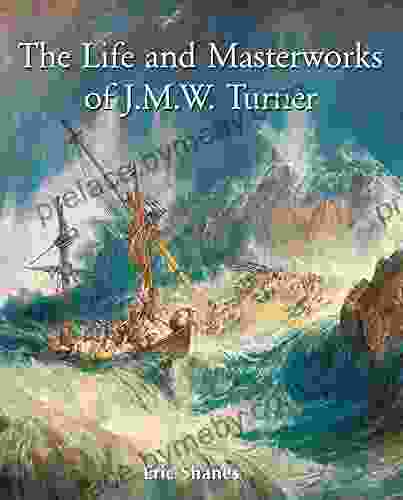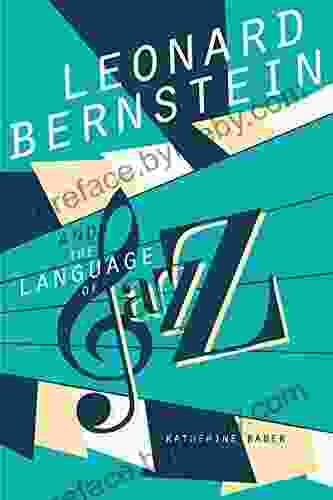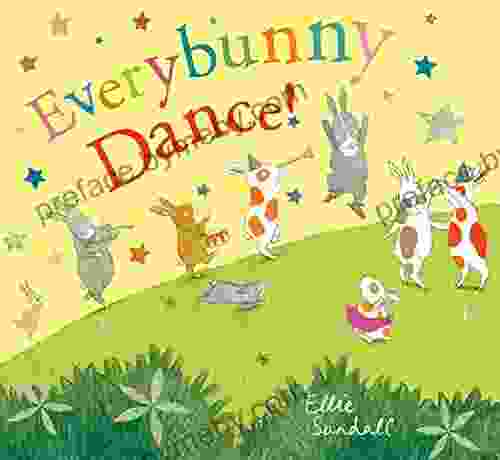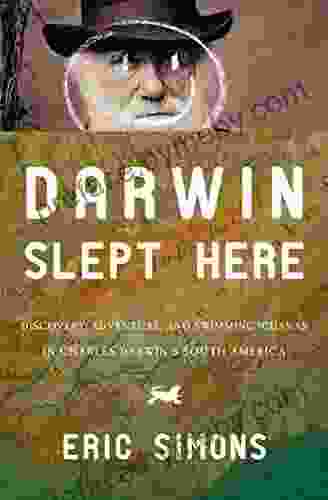Leonard Bernstein and the Language of Jazz Music in American Life

:
Leonard Bernstein's legacy as a renowned conductor, composer, and educator is unparalleled. His profound influence on classical music is well-documented, but his deep connection to jazz music is often overlooked. This article delves into the intricate relationship between Bernstein and jazz, exploring how he incorporated its elements into his classical works, fostered its acceptance within the mainstream, and utilized it as a vehicle for social commentary.
Bernstein's Early Exposure to Jazz:
5 out of 5
| Language | : | English |
| File size | : | 5437 KB |
| Text-to-Speech | : | Enabled |
| Screen Reader | : | Supported |
| Enhanced typesetting | : | Enabled |
| Word Wise | : | Enabled |
| Print length | : | 292 pages |
Bernstein's first encounters with jazz occurred during his formative years in Boston. As a young musician, he was exposed to the city's vibrant jazz scene and became enamored by its improvisational nature, rhythmic vitality, and emotional expressiveness. This early influence would shape his musical development and ultimately inform his later compositions.
Incorporating Jazz Elements into Classical Works:
Throughout his career, Bernstein deftly wove jazz elements into his classical compositions. In his "Serenade after Plato's Symposium," for example, he employs syncopated rhythms, extended harmonies, and improvisatory passages reminiscent of bebop jazz. Similarly, his "Symphony No. 2: The Age of Anxiety" incorporates jazz-inspired harmonies, melodic fragments, and rhythmic drive, reflecting the anxious and restless spirit of the 1950s.
Fostering Jazz's Acceptance:
Bernstein played a crucial role in bridging the divide between classical music and jazz. As a renowned conductor, he frequently programmed jazz works in his concerts with the New York Philharmonic and other major orchestras. Through these performances, he introduced jazz to a broader audience and challenged the elitist attitudes that had long marginalized the genre.
Utilizing Jazz for Social Commentary:
Beyond its musical significance, Bernstein also saw jazz as a potent tool for social commentary. His "Mass: A Theatre Piece for Singers, Players, and Dancers" (1971) is a powerful indictment of the Vietnam War and social injustices. The work's use of jazz idioms, bluesy harmonies, and improvisatory sections adds a visceral and emotional dimension to its message.
Bernstein's Jazz Collaborations:
Throughout his career, Bernstein collaborated with numerous jazz musicians. He conducted the Dizzy Gillespie Big Band, recorded with Count Basie, and worked closely with Dave Brubeck. These collaborations deepened his understanding of jazz and further expanded his musical vocabulary.
Bernstein's Educational Outreach:
Bernstein's passion for jazz extended beyond the concert hall. He was a tireless advocate for music education and firmly believed in the transformative power of music. Through his "Young People's Concerts," he introduced jazz to countless students, fostering an appreciation for the genre's richness and diversity.
:
Leonard Bernstein's relationship with jazz music was profound and enduring. He embraced its rhythmic vitality, emotional expressiveness, and improvisational nature, incorporating jazz elements into his classical works, championing its acceptance within the mainstream, and utilizing it as a vehicle for social commentary. Bernstein's legacy as a musical innovator, cultural ambassador, and social activist is forever entwined with his deep connection to jazz.
5 out of 5
| Language | : | English |
| File size | : | 5437 KB |
| Text-to-Speech | : | Enabled |
| Screen Reader | : | Supported |
| Enhanced typesetting | : | Enabled |
| Word Wise | : | Enabled |
| Print length | : | 292 pages |
Do you want to contribute by writing guest posts on this blog?
Please contact us and send us a resume of previous articles that you have written.
 Book
Book Novel
Novel Page
Page Chapter
Chapter Text
Text Story
Story Genre
Genre Reader
Reader Library
Library Paperback
Paperback E-book
E-book Magazine
Magazine Newspaper
Newspaper Paragraph
Paragraph Sentence
Sentence Bookmark
Bookmark Shelf
Shelf Glossary
Glossary Bibliography
Bibliography Foreword
Foreword Preface
Preface Synopsis
Synopsis Annotation
Annotation Footnote
Footnote Manuscript
Manuscript Scroll
Scroll Codex
Codex Tome
Tome Bestseller
Bestseller Classics
Classics Library card
Library card Narrative
Narrative Biography
Biography Autobiography
Autobiography Memoir
Memoir Reference
Reference Encyclopedia
Encyclopedia Ethan Cobb
Ethan Cobb Eric Orton
Eric Orton Elisa New
Elisa New Mike Gibson
Mike Gibson S E Smith
S E Smith Jesse Szewczyk
Jesse Szewczyk Eric Goldberg
Eric Goldberg Elaine A Clark
Elaine A Clark Eleanor Winters
Eleanor Winters Elaine Murray Stone
Elaine Murray Stone Ellen Tomaszewski
Ellen Tomaszewski Joe Parnar
Joe Parnar Eric Newby
Eric Newby Emil Frlez
Emil Frlez Simone Muschett
Simone Muschett Eliana Gil
Eliana Gil Eric Blehm
Eric Blehm Elwyn Hartley Edwards
Elwyn Hartley Edwards Sylvia Kristel
Sylvia Kristel Jason Thalken
Jason Thalken
Light bulbAdvertise smarter! Our strategic ad space ensures maximum exposure. Reserve your spot today!

 Arthur Conan DoyleMy Shot: Balancing It All and Standing Tall, a Journey of Empowerment and...
Arthur Conan DoyleMy Shot: Balancing It All and Standing Tall, a Journey of Empowerment and... VoltaireFollow ·18.1k
VoltaireFollow ·18.1k Raymond ParkerFollow ·2.8k
Raymond ParkerFollow ·2.8k Allen ParkerFollow ·8.6k
Allen ParkerFollow ·8.6k Pete BlairFollow ·6.7k
Pete BlairFollow ·6.7k Emmett MitchellFollow ·19.1k
Emmett MitchellFollow ·19.1k Herman MelvilleFollow ·5.4k
Herman MelvilleFollow ·5.4k Randy HayesFollow ·8.6k
Randy HayesFollow ·8.6k Dylan MitchellFollow ·6.4k
Dylan MitchellFollow ·6.4k

 Richard Adams
Richard AdamsGame Development with Rust and WebAssembly: A...
Are you passionate...

 David Baldacci
David BaldacciGendered Identity and Aspiration on the Globalized Shop...
: The Convergence of Gender, Identity, and...

 Natsume Sōseki
Natsume SōsekiFresh Eyes On Panama: A Captivating Exploration of a...
Panama, a country often overshadowed by its...

 Adrian Ward
Adrian WardThe Life and Masterworks of J.M.W. Turner: A Timeless...
The Man Behind the Masterpieces ...
5 out of 5
| Language | : | English |
| File size | : | 5437 KB |
| Text-to-Speech | : | Enabled |
| Screen Reader | : | Supported |
| Enhanced typesetting | : | Enabled |
| Word Wise | : | Enabled |
| Print length | : | 292 pages |














